Turnips are one of the fastest root vegetables to grow, and produce both edible roots and leaves. Whether you grow turnips for their succulent roots, or love them for their tasty greens, or just love to eat the whole plant from root to shoot, there are several fertilizers you can use to get a bumper crop of turnips this year.
Below are some of the most recommended (while still easy to find) fertilizers you can use for either turnips (roots) or turnip greens.
On this page:
List of Fertilizers for Turnips (Roots)
Summary
When growing turnips, you want to select a fertilizer with a lower ratio of nitrogen (N) to phosphorus (P) and potassium (K). Nitrogen is important for leaf and stem growth, but you don’t want too much when growing turnips or else they will prioritize growing lots of leafy greens but smaller roots. Phosphorus and to a lesser extent potassium are important for healthy root development. Other than that, any vegetable fertilizer will have the nutrients that turnips need to thrive.
| Fertilizer | Type | Notes |
|---|---|---|
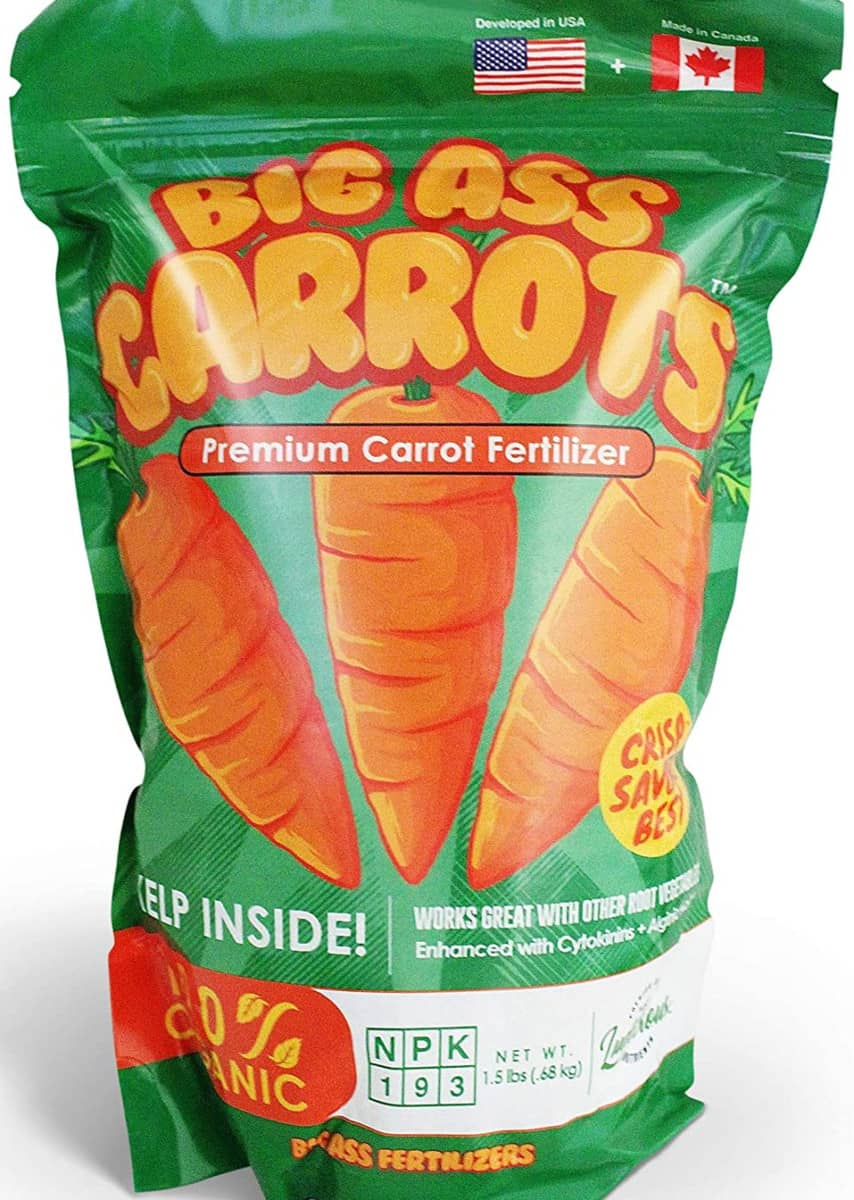
Ludicrous Nutrients Big Ass Carrots Premium Carrot and Root Vegetable Fertilizer |
Organic | Ideal for all root vegetables; best for growing bigger turnips |
| Granular, hybrid organic with natural ingredients | Recommended NPK value (5-10-10) according to several agricultural extensions | |
|
|
Organic, Contains Beneficial Microbes | |
|
|
Organic, Contains Beneficial Microbes | |
| Organic | ||
| Organic, Granular, Contains Beneficial Microbes | ||
| Organic, Granular | Balanced fertilizer for both turnips and turnip greens |
1. Ludicrous Nutrients Big Ass Carrots Premium Carrot and Root Vegetable Fertilizer

- 1-9-3 NPK
- Organic
- Suitable for all root vegetables (turnips, carrots, beets, radishes, etc.)
- Very low ratio of nitrogen to prioritize bigger turnip roots
Ludicrous Nutrients’ aptly named Big Ass Carrots fertilizer is specially formulated for promoting larger, healthier roots, including being an excellent organic fertilizer for turnips. With a very low ratio of nitrogen and higher ratios of phosphorus and potassium, you can apply this fertilizer into your garden without worrying about promoting too much leafy green growth, and get big turnips instead.
Since this is the ideal NPK ratio for root crops, if this fertilizer is out of stock, look for similar fertilizers with a low nitrogen (N) number, much higher phosphorus (P) number, and also a fairly high potassium (K) number. There are several more recommended fertilizers below.
As a dry organic fertilizer, it should be mixed into the soil before planting for optimal results. It takes time for soil microbes to break down organic fertilizers and release plant-available nutrients for your turnips to take up. The benefits of this are that it’s harder to “burn” turnips with organic fertilizer, and it continually releases nutrients throughout the growing season.
You only need to apply this fertilizer once before planting/sowing, but you can also top dress later in the season and mix into the top layer of soil.
How to apply: In raised garden beds or containers, apply 1-2 scoops (tablespoons) per square foot and mix into the soil 1-2 days before planting. If planting in a larger area in the ground, the manufacturer recommends 0.5 to 1 kg (approx. 1.1 to 2.2 lbs) of fertilizer for every 5 sq. meters (54 sq ft). [Editor’s note: They also say you can lightly sprinkle over the soil and mix it into the top layer, but this is presumably if you want to add more fertilizer to an existing carrot patch. Water thoroughly after top dressing.]
2. Lilly Miller Morcrop Tomato & Vegetable Food
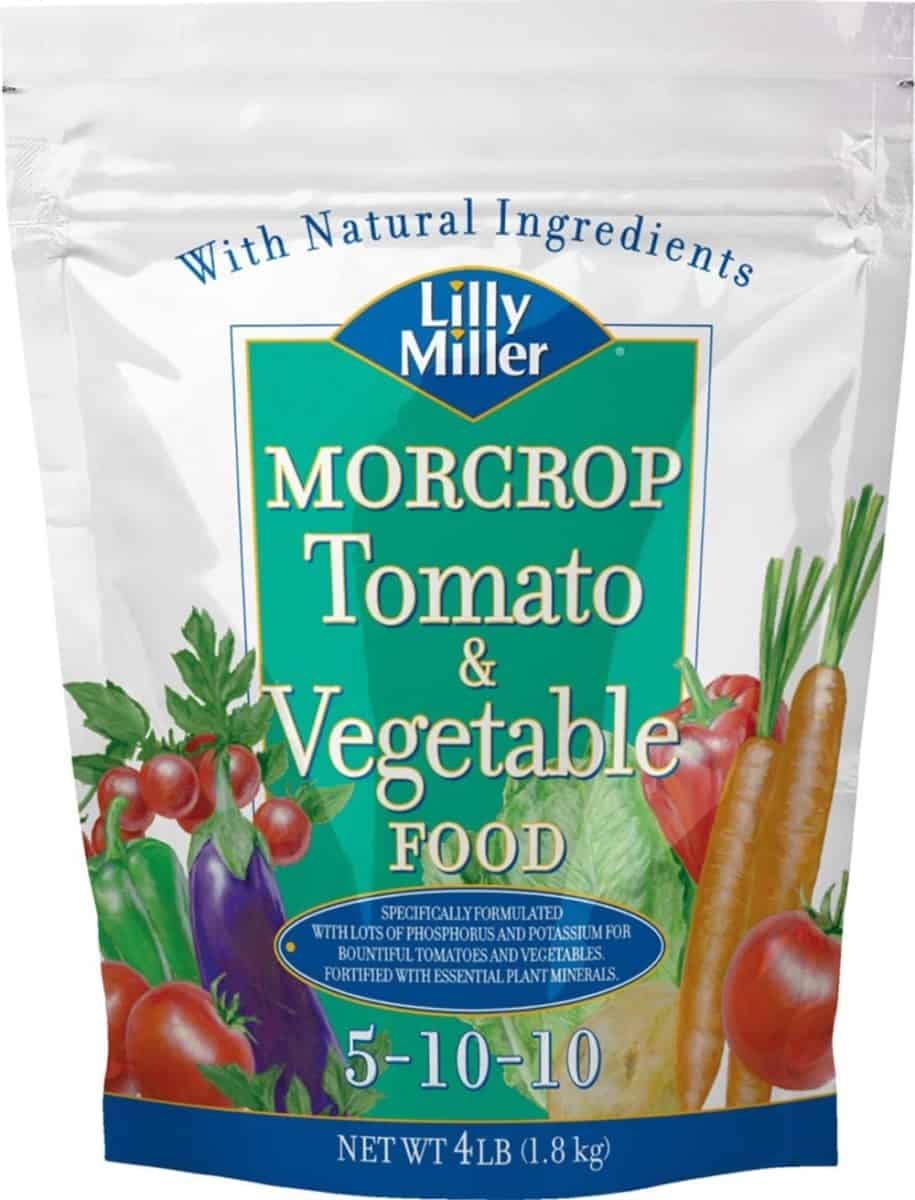
- 5-10-10 NPK
- Granular, hybrid organic with natural ingredients
- Recommended NPK ratio for turnip cultivation according to agricultural extensions
Morcrop Tomato & Vegetable Food is a great all-purpose vegetable fertilizer. It has half the amount of nitrogen as phosphorus and potassium, making it especially good for root vegetables like turnips as well as fruiting vegetables. The 5-10-10 NPK ratio is a common recommendation for vegetables, and especially turnips, according to various agricultural extensions [1][2][3]. While nitrogen is important very early in the season, too much nitrogen throughout the growing season will encourage more leaf growth and less root growth.
Morcrop is made with natural ingredients and is fortified with important plant minerals. Being a granular fertilizer, it will also release nutrients slowly into the soil, ensuring a continuous release of plant-available nutrients for at least 6 weeks, after which you can reapply with light feedings.
How to apply: Before planting your turnips: Add 2-3/4 (2.75) cups of fertilizer per 50 sq ft and mix into the top 3 to 6 inches of soil. After planting: Every 6 weeks, you can apply an additional 2/3 cup of fertilizer per 25-foot row of turnips, at least 3 inches away from the plants, and mix it into the top layer of soil. Water well after fertilizing.
3. Dr. Earth Organic Tomato, Vegetable & Herb Fertilizer
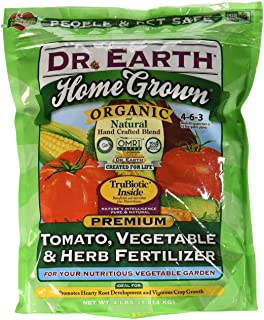
- 4-6-3 NPK
- Organic, Continuous Release
- Contains Beneficial Microbes
Dr. Earth’s organic fertilizer for vegetables is a comprehensively formulated all-purpose fertilizer with a good NPK ratio for turnips, while also being great for other vegetables, too.
It’s not only a fully organic fertilizer but also contains beneficial bacteria and fungi to build a healthy soil ecosystem in your garden, making it unique among most commercial fertilizers. If your soil has poor microbial activity, it can take longer for organic fertilizers to break down and release the nutrients in a plant-available form. This means Dr. Earth can help speed up the process, allowing a faster uptake of nutrients throughout the growing season.
How to apply: You can apply Dr. Earth to your turnip bed every two months throughout the growing season. Before planting: Mix 1 1/2 cups for every 10 sq ft of soil, or 8 cups per 50 ft row. Mix in the top 6-12 inches of soil thoroughly, then water. For established turnips: Mix 3/4 cup for every 10 sq ft of soil, or 4 cups per 50 ft row. Water thoroughly after each application. [Editor’s note: The package does not specify application rates for root vegetables in containers, but you can use a third to half the amount recommended for tomatoes and peppers in containers.]
4. Burpee Organic Tomato and Vegetable Granular Plant Food
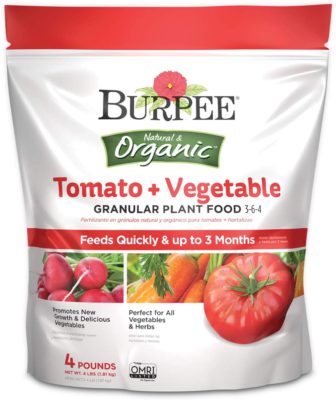
![]()
Buy from Burpee
Buy from Walmart
- 3-6-4 NPK
- Organic, Continuous Release
- Contains Beneficial Microbes
Burpee has been a trusted seed supplier for over 144 years, so they know exactly the kind of fertilizer blend turnips need to thrive. Their organic tomato and vegetable fertilizer is an excellent all-purpose fertilizer with an even better NPK ratio for turnips than Dr. Earth.
Burpee’s organic fertilizer is gentle enough not to burn your turnips if you follow the directions, while still packed with enough nutrients to last for several months. And just like Dr. Earth, Burpee’s fertilizer contains beneficial microbes that can boost the soil life of in-ground beds, raised beds, and containers.
How to apply: Feeds for up to 3 months, but you can reapply every 2 months. Always water after applying Burpee’s organic granular plant food. For in-ground turnips: Apply 1/2 cup of fertilizer for every 10 sq ft into the top 4-6 inches of soil before planting. For preparing container and raised bed soil: Mix 1-1/2 cups per cubic foot of soil or potting mix. For feeding established turnips: Apply 1-1/3 cups along every 10 foot-row of turnips and water thoroughly. [Editor’s note: Do not apply granular fertilizer directly onto your turnips.]
5. HollandBasics 2-8-4 Power Bloom Fertilizer
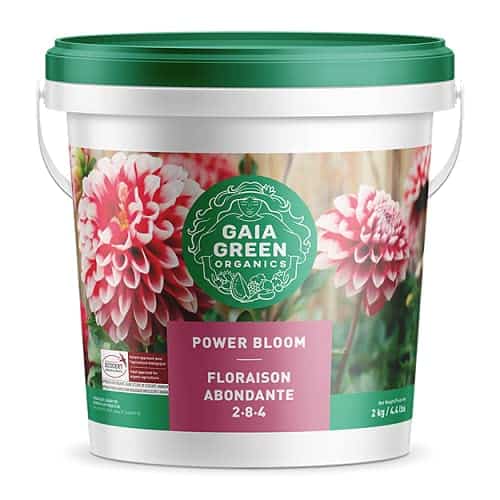
- 2-8-4 NPK
- Organic
- High Phosphorus and Low Nitrogen for Bigger Roots
Another highly recommended organic fertilizer for turnips is HollandBasics 2-8-4 Power Bloom blend. This organic fertilizer will break down faster than granular mixes as it’s already in a powder, which also makes it easier to mix into the soil evenly. Holland Industry has been known to put out a lot of high quality organic fertilizers under their Gaia Green brand.
Looking down the list, you may have noticed that a lot of these fertilizers are branded as “tomato and vegetable” fertilizers. And this one is a bloom formula. That’s because fertilizers that support flowering and fruiting have a similar NPK ratio to what is recommended for turnips–that is, low nitrogen and higher phosphorus and potassium. Phosphorus is not only important for root development, but also budding, flowering, and fruiting.
How to apply: Before planting, apply 4.4 lbs of fertilizer per 108 sq ft of your garden bed, and mix into the top few inches of soil. [Editor’s note: this translates to roughly 7 oz per 1×11′ row of turnips, or more conservatively 1/2 oz per square foot.] For container turnips: Mix 3 tablespoons per 1 gallon of potting soil.
6. Jobe’s Organics Vegetable & Tomato Plant Food
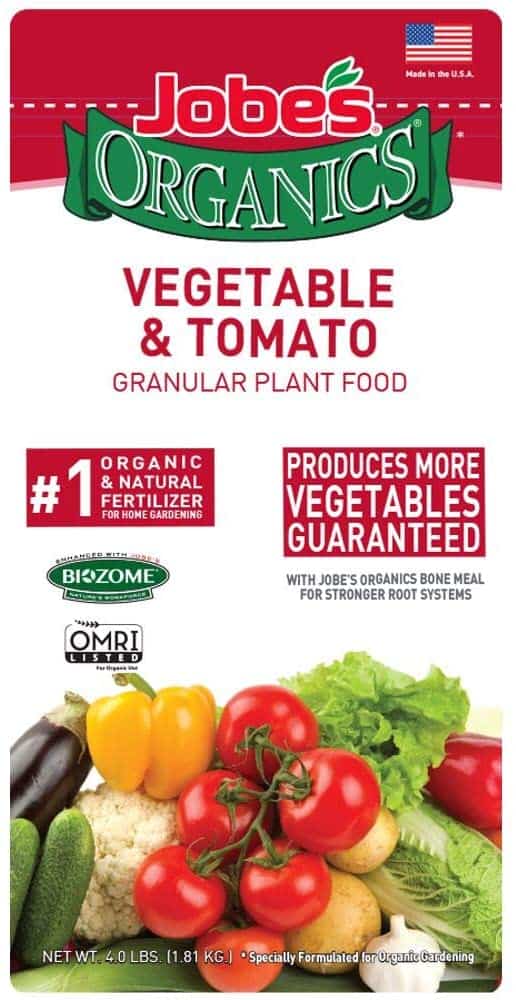
- 2-5-3 NPK
- Organic, Continuous Release
- Contains Beneficial Microbes
Jobe’s is another trusted brand, with a variety of spikes and granular fertilizers, and organic and non-organic blends. For turnips, it’s better to use their granular organic vegetable and tomato fertilizer. Jobe’s fertilizer spikes are preferred for feeding larger single plants, like tomatoes and peppers.
With a proportion of nitrogen that is less than half the phosphorus (2% vs. 5% by weight), this is ideal for growing big, healthy turnips without having them direct all their energy into growing leaves. Jobe’s Organics Vegetable & Tomato Plant Food also has a proprietary blend of microbes that will aggressively break down organic matter. In this way, Jobe’s feeds your soil as well as your turnips.
How to apply: Before planting, apply 1-1/2 (1.5) cups of fertilizer per 10 square feet of growing space (or 10-foot row of turnips) and mix into the top few inches of soil, then water well. [Editor’s note: If top dressing, apply alongside your row of turnips and mix into the top few inches of soil before watering. Avoid touching your turnips directly with fertilizer granules.] You can reapply fertilizer every 4-6 weeks.
7. Jobe’s Organics All Purpose Granular Fertilizer
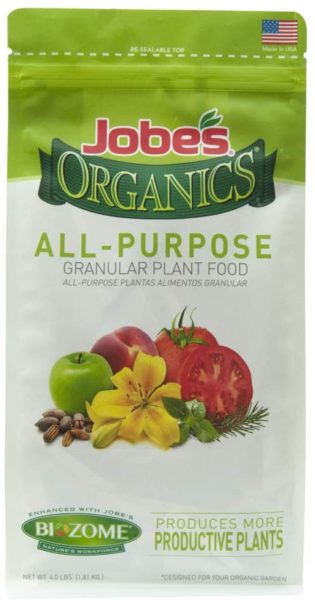
- 4-4-4 NPK
- Balanced fertilizer for both turnips and turnip greens
- Organic, Continuous Release
- Contains Beneficial Microbes
If you are not trying to maximize the size of your turnips and just want an all-around good fertilizer for all vegetables, including turnips, onions, tomatoes, peppers, lettuce, kale, beans, etc. you can have success with a more balanced fertilizer, like Jobe’s 4-4-4 all-purpose granular fertilizer. For gardeners who want to micromanage their fertilizing schedule, you can also start with Jobe’s 4-4-4 before planting to give an overall boost to your seedlings, before switching to a low-nitrogen, high-phosphorus fertilizer later on in the growing season.
This fertilizer is just like Jobe’s Organics Vegetable & Tomato Plant food except with a more balanced NPK ratio, and is applied the same way.
Other recommended balanced fertilizers are Southern Ag’s 10-10-10, Lilly Miller’s 10-10-10, EB Stone’s 5-5-5, and Burpee’s 4-4-4.
How to apply: Before planting, apply 1-1/2 (1.5) cups of fertilizer per 10 square feet of growing space (or 10-foot row of turnips) and mix into the top few inches of soil, then water well. [Editor’s note: If top dressing, apply alongside your row of turnips and mix into the top few inches of soil before watering. Avoid touching your turnips directly with fertilizer granules.] You can reapply fertilizer every 4-6 weeks.
List of Fertilizers for Turnip Greens
Summary
A lot of gardeners grow turnips for the greens more than the roots. While the last balanced fertilizer in the previous section (Jobe’s 4-4-4) will grow excellent turnip greens and decent-sized turnips, if you don’t care about the turnip roots themselves and want to maximize bigger turnip green harvests, it’s better to use high-nitrogen fertilizers. Just be forewarned, you may end up with tiny turnips if you use the below fertilizers, as your plants will focus more on growing lush greens than juicy turnips.
| Fertilizer | Type | Notes |
|---|---|---|
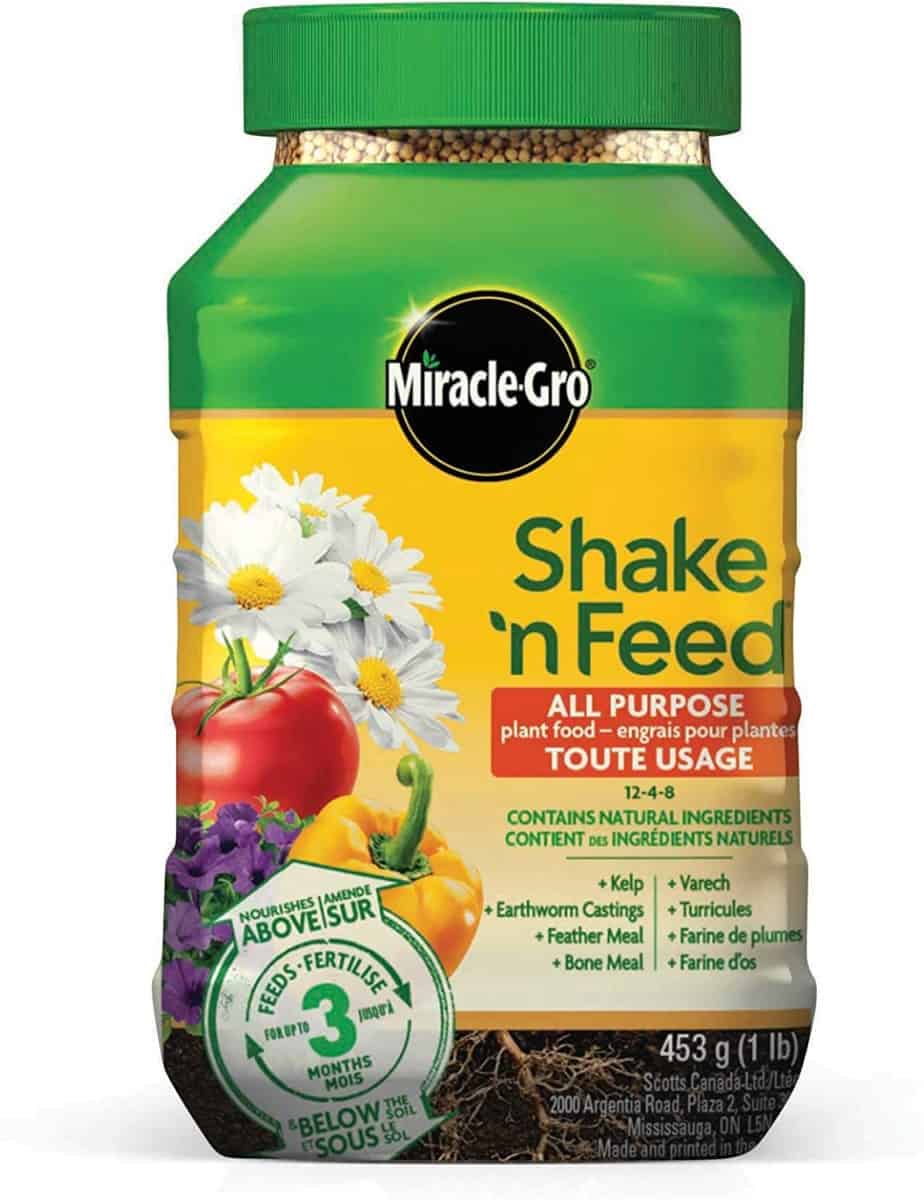 Miracle-Gro Shake ‘N Feed All Purpose Plant Food Miracle-Gro Shake ‘N Feed All Purpose Plant Food(12-4-8) |
Hybrid Organic, Granular | |
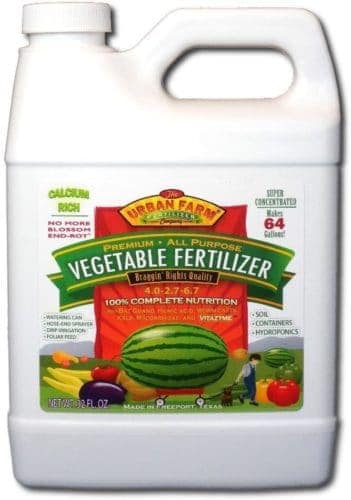 Urban Farm Fertilizers All-Purpose Vegetable Fertilizer Urban Farm Fertilizers All-Purpose Vegetable Fertilizer(4.5-2.5-6.0) |
Organic, Liquid Feed | Good for Soil and Hydroponics |
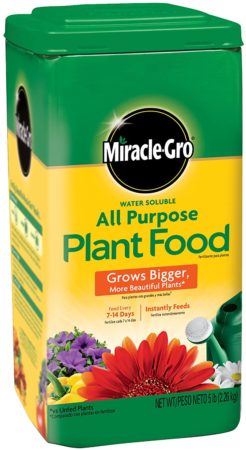 Miracle-Gro Water Soluble All Purpose Plant Food Miracle-Gro Water Soluble All Purpose Plant Food(24-8-16) |
Liquid Feed | |
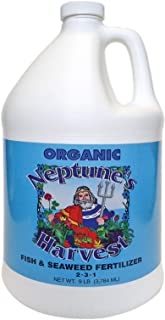 Neptune’s Harvest Organic Hydrolized Fish & Seaweed Fertilizer Neptune’s Harvest Organic Hydrolized Fish & Seaweed Fertilizer(2-3-1) |
Organic, Liquid Feed | Balanced fertilizer for both turnips and turnip greens |
1. Miracle-Gro Shake ‘N Feed All Purpose Plant Food

- 12-4-8 NPK
- Hybrid Organic
- Granular, Continuous Release
For growing greens, fewer fertilizers are as economical and widely available as Miracle-Gro’s Shake ‘N Feed All Purpose Plant Food. This fertilizer has a high ratio of nitrogen (N) to phosphorus (P), making it ideal for turnip greens. It’s what can be described as hybrid organic, meaning it’s not fully organic but does have natural ingredients. As a granular fertilizer, it will also release nutrients continuously over a 3-month period.
If you prefer using a purely organic fertilizer, Miracle-Gro has a Performance Organics 11-3-8 fertilizer that’s also widely available.
Miracle-Gro gets a bad rap, but part of the reason is that their fertilizers tend to be nitrogen-heavy, which is perfect for greens but not ideal for fruits and fruiting vegetables. Even their tomato fertilizer is more like balanced all-purpose plant food. But for growing turnip greens, there are fewer fertilizers as easily accessible as Miracle-Gro.
How to apply: Before planting, evenly apply approximately 1/2 cup granular fertilizer per 10 sq ft of growing space (or per 10-ft row of turnips), mix into the top 1-3 inches of soil, and water well. You can reapply every 3 months. Do not let the fertilizer directly touch the leaves or roots.
2. Urban Farm Fertilizers All-Purpose Vegetable Fertilizer

- 4.5-2.5-6.0 NPK
- Organic, Liquid Feed
- Great for both soil and hydroponics
- High-performance organic fertilizer for home and commercial use
Urban Farm Fertilizers originally started formulating organic hydroponic nutrients, but their liquid fertilizers are just as good for plants grown in soil, and are nutritionally complete, meaning you don’t need to use other fertilizers in addition to theirs. They carefully formulate their fertilizers by hand every week, so their NPK values are approximations, but their organic, all-purpose blend has the right nutrient ratio for turnip greens.
Urban Farm Fertilizers’ all-purpose fertilizer is also super concentrated; a 1-gallon container can be diluted to make 256 gallons of regular strength fertilizer. Do not apply undiluted liquid feed directly to plants!
How to apply: Urban Farm Fertilizers uses a 1:256 dilution ratio for regular-strength fertilizer. For example, dilute 2.5 to 3 fl oz in 5 gallons of water for growing turnips. Apply every 7 to 14 days, or as directed on the instructions. [Editor’s note: If feeding seedlings, use a lower strength, such as 1 fl oz per 5 gallons of water.]
3. Miracle-Gro Water Soluble All Purpose Plant Food

- 24-8-16 NPK
- Liquid Feed, Instant Release
Can you use Miracle-Gro’s all-purpose liquid feed? Yes. Should you? If you want turnip greens, sure. I would not recommend it for growing actual turnip roots, but for turnip greens, this is a highly recommended liquid fertilizer. It has a very high ratio of nitrogen, making it ideal for all leafy green vegetables, including turnip greens.
While this is classified as a liquid fertilizer, it’s sold as a blue powder which you need to mix with water before applying. It also has all the nutrients already available to plants, so use this for an instant nutrient boost for your greens. However, because it’s purely a liquid fertilizer, it requires regular feedings, every 1 to 2 weeks.
How to apply: Mix 1.5 tbsp (the large end of the enclosed scoop) per 1.5 gallons of water and water around the base of your turnips. Apply every 7 to 14 days for best results. [Editor’s note: Do not apply the dry fertilizer crystals to your plants. You shouldn’t apply this fertilizer before planting, but for turnip seedlings that have at least 1-2 true leaves, you can use a weaker strength solution, around ½ tbsp per 1.5 gallons of water.]
4. Neptune’s Harvest Organic Hydrolized Fish & Seaweed Fertilizer

- 2-3-1 NPK
- Organic, Liquid Feed, Fast Acting
- More balanced for both turnip greens and roots
One can’t bring up organic liquid plant food without mentioning fish fertilizers. These are powerful, organic fertilizers made from an emulsion of fish scraps. However, Neptune’s Harvest Organic Hydrolized Fish & Seaweed Fertilizer is technically not a fish emulsion, but rather a hydrolyzed fish fertilizer, which means the fish have been broken down by enzymes into a fully liquid form while keeping all the amino acids, vitamins, minerals, fish oils, etc. intact. This makes their fertilizer a very fast-acting organic fertilizer to boost the growth of your turnip greens. This fertilizer is also blended with seaweed, making it more balanced than pure fish fertilizers.
You should always dilute Neptune’s Harvest Organic Hydrolized Fish & Seaweed Fertilizer; in its concentrated form, it will have a very strong fishy smell. However, when diluted and used in the garden, there is very little smell.
How to apply: Apply every 7 to 14 days and always shake well before using. Mix 1 oz (1/8 cup) per gallon of water and apply until the soil is saturated. Foliar feeding (i.e. spraying fertilizer directly on the leaves) is not necessary, but if you want to foliar feed your turnip greens to quickly resolve a deficiency, do it in the evening or very early morning, using a mist sprayer on the top and bottom of the leaves. Avoid foliar feeding when temperatures are above 80°F (27°C).
Related Questions About Fertilizing Turnips
When to Fertilize Turnips
When using a granular organic fertilizer, mix within the soil before you plant your turnips. You can later top dress with organic granular fertilizer according to the instructions (usually every 1-3 months). When using a liquid fertilizer, apply every 7 to 14 days throughout the growing season, but don’t apply it until after the first true leaves on seedlings appear.
Do Turnips Like Nitrogen?
Turnips benefit from nitrogen early after sprouting, but consistently high nitrogen fertilization throughout the growing season will promote the growth of more turnip greens instead of growing bigger roots.
Nitrogen is an important plant nutrient, mainly responsible for stem and leaf growth. Without any nitrogen, your turnips will not be able to grow enough foliage to support bigger root growth. On the other hand, too much nitrogen will make your turnips flourish with tasty greens–at the cost of having smaller, fibrous turnip roots.
Because of this, it’s recommended to use low-nitrogen fertilizers for turnips, often sold as tomato/vegetable or bloom fertilizers. Even commercial growers are recommended to use a basic 5-10-10 fertilizer for turnips. However, some gardeners who want to manage their fertilization schedule more efficiently will use a high-nitrogen fertilizer early in the season, then switch to low-nitrogen fertilizers to promote bigger roots. That said, if you are growing turnips for their greens, you should use balanced or high-nitrogen fertilizers throughout the growing season.
